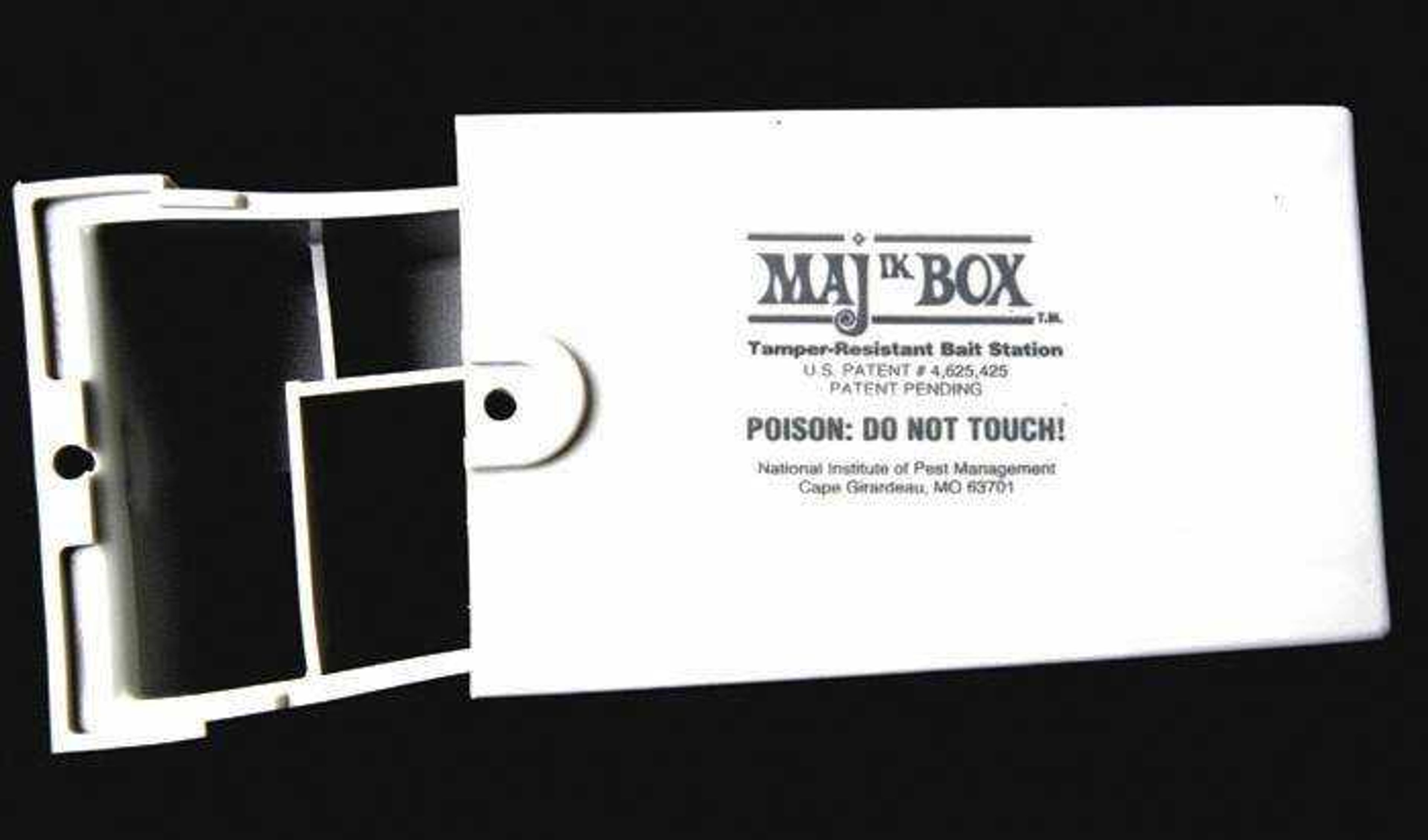Eliminating asthma's pests
What if helping your child get over asthma symptoms were as simple as changing your home environment? A study being done in Kansas City sponsored by the Healthy Homes Network has so far shown that the presence of rodents and insects can trigger asthma attacks. Elizabeth Knote, president of Cape-Kil Pest Control Company in Cape Girardeau, is involved in the study, which uses Cape Kil's patented Maj-Ik Box outdoor mouse trap...
What if helping your child get over asthma symptoms were as simple as changing your home environment?
A study being done in Kansas City sponsored by the Healthy Homes Network has so far shown that the presence of rodents and insects can trigger asthma attacks. Elizabeth Knote, president of Cape-Kil Pest Control Company in Cape Girardeau, is involved in the study, which uses Cape Kil's patented Maj-Ik Box outdoor mouse trap.
Healthy Homes targeted 200 families of asthmatic children who volunteered to participate in the study, Knote said. The children were evaluated at a Kansas City hospital. Knote is coordinating both rodent and inset management programs for the Kansas City Community Environmental Remediation and Training Project (KC-CERT). The researchers analyzed samples taken from the families' homes to determine whether there was a high level of mouse allergens or roach allergens.
Knote said that the Environmental Protection Agency has determined that asthma attacks are preventable when the triggers are removed from the indoor air. Only recently, she said, were mice identified as an environmental trigger of asthma.
Researchers at Johns Hopkins University in Baltimore discovered that researchers who worked with test lab animals on a regular basis were developing asthma, and found triggers present in mouse urine.
"That's why they were getting sick," Knote said. "In some cases, it may only take 1.6 microgram of mouse allergen per gram of dust to trigger an attack. That's why it's so important to stop mice from getting inside."
The Research Triangle Institute based in North Carolina determined from 831 homes it sampled, that 82 percent of homes nationwide have mouse allergens, and 22 percent of those have a high enough concentration to trigger an asthma attack.
Through a federal grant, Healthy Homes was able to do some repairs on the homes of the 200 families involved in the study, fixing the plumbing, repairing the roof, getting rid of mold. A mouse, Knote said, can get inside a home easily; all it needs is a quarter-inch hole.
It's crucial, she said, to kill the mice before they get inside. The researchers needed a better mousetrap, which Knote was able to provide through her company. Cape Kil has been using the Maj-Ik boxes routinely in Southeast Missouri to control the mouse population. Four to six boxes are installed around a house and are baited with poisonous cubes that kill the mice but do not cause an secondary harm to animals who might later come in contact with the poisoned mice.
Locally, Knote said, exterminators check the boxes quarterly for dead mice; in Kansas City they check them monthly. City mice are not only more prolific than country mice, she said, but they are wily enough that they don't get trapped inside the boxes. Instead, they eat the poisoned bait and die outside.
One cube of bait is enough to kill eight mice, Knote said. In one Kansas City home with four traps, "we used enough bait to kill 90 mice," she sad. "Three were trapped outside, one got in the home; the rest died outside."
At another test home, Knote said, the mouse allergen level dropped from 4.26 micrograms of mouse allergen per gram of dust to zero in just six months by using the Maj-Ik Boxes.
The children who were exposed to the mouse allergens improved. Although the study is ongoing and no results have been released, Knote said she has talked to some of the children who tell her they feel better.
"One child was very asthmatic," she said. "The first semester of school in 2004, he missed 22 days because of asthma. His mother had to come to school to give him his medicine every day. She couldn't hold a job. Now she has a job and he's doing better."
The study is expected to be finished by the fall. Once all the results are analyzed, the participating hospital, which chooses not to be identified at this point, will release the results, and will submit articles outlining the findings to journals such as the Journal of the American Medical Association.
The study also outlines the effect of roaches on asthmatic children. Knote said that often people who have roach problems also have mice infestations. It has also been determined, she said, that buildings that have no evidence of live insects may still test positive for their presence because the exoskeletons shed by the roach nymphs as they mature break down into such fine particles that regular vacuum cleaners don't pick them up. Participants in the study were each given a vacuum cleaner with HEPA filter to rid the homes of the microscopic bug residue.
"If it takes a special vacuum cleaner and good pest management, maybe an asthmatic child will get better," Knote said. "It makes sense to me to take care of the home environment first. Maybe we can reduce the amount of medication a child has to take."
lredeffer@semissourian.com
335-6611, extension 160
Connect with the Southeast Missourian Newsroom:
For corrections to this story or other insights for the editor, click here. To submit a letter to the editor, click here. To learn about the Southeast Missourian’s AI Policy, click here.









